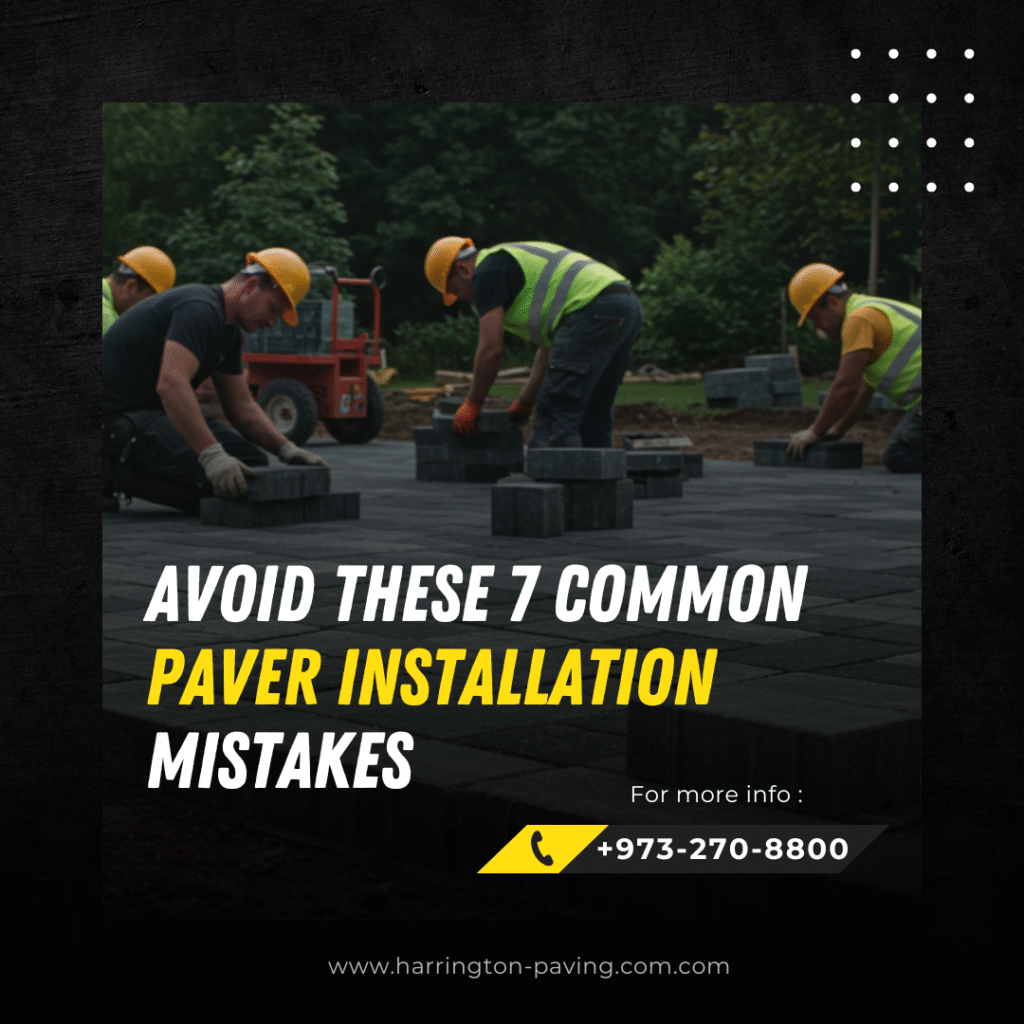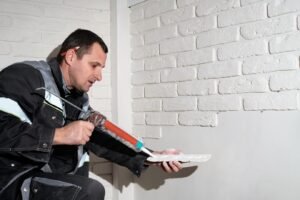While installing pavers, the accurate size and material matter the most. A well-laid paver surface can add beauty, functionality, and value to your property, but any misstep during the installation process can lead to lasting issues.
When installing a patio, walkway, or driveway, you can avoid common paver installation mistakes and ensure a durable and attractive surface.
Before further ado, read below to understand what errors to avoid and how to correct them before they become costly problems.

Why Paver Installation Problems Happen
Paver installation problems often arise due to poor preparation and the use of improper materials.
Inadequate base preparation, incorrect drainage, or low-quality pavers can lead to shifting, cracking, or uneven surfaces over time.
How to install pavers correctly involves addressing these critical factors from the beginning, ensuring the pavers stay in place and maintain their appearance for years.
Mistake #1. Paver Base Mistakes That Cause Long-Term Shifting
One of the most significant paver base mistakes that can result in long-term shifting is not adequately compacting the base material or using improper base materials.
The base acts as the foundation for the pavers and needs to be level and stable. If the base is not properly prepared, the pavers can shift, sink, or even crack.
To avoid this, ensure the base is at least 4-6 inches deep, compacted firmly, and made of materials like crushed stone or gravel that allow for proper drainage and support.
Mistake #2. Drainage Errors Create Water-Related Paving Problems
Common paving problems related to drainage occur when water does not flow correctly away from the paver surface.
Poor drainage can lead to pooling, erosion, and even cracked pavers. Paver installation mistakes are areas that must be graded properly to allow for runoff and ensure water drains away from the surface.
When planning the installation, be sure to consider the slope and ensure there are no low points that could trap water and cause damage to your pavers in the long term.
Mistake #3. Using the Wrong Materials Weakens the Structure
Using subpar materials is a critical common paver mistake that can compromise the integrity of your installation. The quality of your pavers, as well as the base and jointing sand, can affect the overall performance.
Low-quality pavers may be more prone to cracking or fading, while the wrong base materials can lead to instability.
Always choose materials designed for the specific type of paver installation you are doing, whether it’s for a driveway, paver patio, or walkway.
This will help ensure long-term durability.
Mistake #4. Walkway Paver Installation Errors Lead to Safety Issues
Walkway paver installation errors can lead to safety concerns, especially when the pavers are not evenly placed.
Fixing uneven pavers creates tripping hazards, making your walkway dangerous to walk on. Always check that the pavers are laid flat, with consistent spacing.
Ensure the joints are filled with the proper sand to prevent shifting.
By paying attention to details, you can avoid these issues and create a safe, attractive walkway that enhances your landscape.
Mistake #5. Forgetting Edge Restraints Lets Pavers Spread Out
A common paver installation mistake that people overlook is the lack of edge restraints. Edge restraints help keep the pavers in place by preventing them from spreading out or shifting over time.
Without these restraints, the pavers may start to loosen and create gaps, which could eventually lead to a compromised surface.
Install edge restraints around the perimeter of your paver surface to ensure the pavers stay secure and aligned for the long haul.
Mistake #6. Patio Paver Mistakes with Joint Sand Encourage Weeds
Failing to install joint sand correctly may lead to issues with weeds growing between the pavers.
This is one of the biggest patio paver mistakes to avoid. Joint sand should be swept into the gaps between pavers to lock them in place and prevent the growth of weeds.
Polymeric sand is an excellent option because it hardens when wet, preventing weed growth and stabilizing the pavers.
Regularly maintaining the joints and filling them with new sand will keep your patio looking pristine
Mistake #7. Ignoring Maintenance Shortens the Lifespan of Pavers
Over time, neglecting maintenance can lead to paver installation problems such as fading, cracking, and shifting.
Regular maintenance, including cleaning the surface, adding joint sand, and sealing the pavers, is essential to maintaining their appearance and longevity.
Without proper upkeep, the pavers can lose their structural integrity, and the area may need to be repaired or replaced much sooner than expected.
How to Install Pavers Correctly with Professional Standards
To ensure your paver installation is up to professional standards, always follow the manufacturer’s instructions and industry guidelines.
How to install pavers correctly involves the proper selection of materials, preparing the base with care, and making sure the surface is properly graded for drainage.
It’s also crucial to follow the right procedures for laying, leveling, and compacting the pavers.
If you’re unsure about the installation process, consulting with an expert can help ensure a durable and aesthetically pleasing result
Avoid Common Paver Mistakes with Expert Help
Avoiding common paver mistakes is crucial for a successful installation.
By paying attention to details such as base preparation, drainage, material selection, and maintenance, you can ensure your pavers last for years.
For best results, it’s always wise to consult with an expert or professional paver patio contractor to ensure your project is done right the first time.

